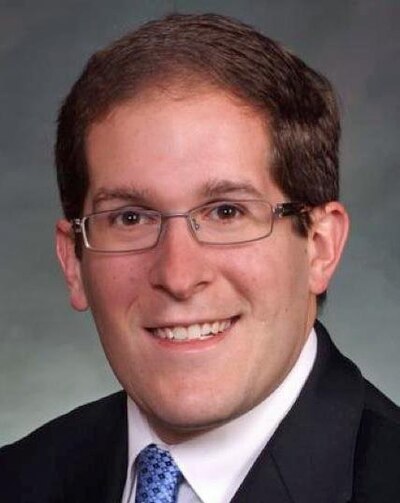The Capitol debate over school finance this year has reached a level of intensity not seen since 2010’s battle over teacher evaluations.
Facing off are school districts that want significant restoration of past budget cuts and lawmakers and education reform groups who are trying to save pieces of 2013’s comprehensive school finance overhaul. (That law isn’t in effect because voters rejected the tax increase needed to pay for it.)
Also looming over the debate is the tricky long-range financial question of whether putting more money into basic school funding this year will set the state up for budget problems in later years, and set school districts up for future cuts.
The battle is being fought over hard-to-read spreadsheets; an alphabet soup of acronyms like ADM, ELL and BEST and most of all over something called the “negative factor.”
At the eye of the storm is House Bill 14-1292, introduced late last month but in the works since last November after voters defeated Amendment 66. The bill went through lots of versions before it was introduced, and backers made significant concessions to critics before the 113-page measure surfaced officially.
But opposition to the bill and heavy pressure to amend it remain strong, and those voices were in full cry during a 6 ½-hour House Education Committee hearing March 3 (see story).
Dillon Democratic Rep. Millie Hamner, chair of the panel and a prime sponsor of HB 14-1292, had announced ahead of time that the committee wouldn’t consider amendments nor vote on the bill at the meeting.
“We will do our very best to respond to what we heard tonight,” she said at the hearing’s close.
With most everyone’s views now on the public record, discussions about HB 14-1292 have returned to a long series of private meetings between lobbyists, interest group leaders and sponsors in an effort to find additional common ground before House Education again takes up the bill. Most observers expect that won’t happen until after March 18, when updated state revenue forecasts are issued.
What’s driving the arguments
Why has the school finance debate reached this level of intensity?
The causes lie in the interplay of major education bills passed and K-12 budget cuts imposed over the past six years. Here’s a review:
Reform measures: The 2008 legislature passed the Colorado Achievement Plan for Kids, which required new content standards, new tests, greater coordination between K-12 and higher education and other reforms. That was followed in 2009 by a new accountability and rating system for schools and districts, the educator effectiveness and evaluation law in 2010 and the READ Act, the early literacy program, in 2012.
Because most of the laws had long rollout timelines, most of them really only hit schools this school year, creating a stiff implementation challenge for many districts, particularly because most of the new programs didn’t come with extra state funding.
Average per-pupil funding
- High point – $7,078 in 2009-10
- Low point – $6,474 in 2011-12
- Current year – $6,652
- Proposed 2014-15 – $6,839
- Proposed + HB 14-1292 – $7,008
Budget cuts: The 2008 recession shrank state revenues significantly, forcing lawmakers to cut K-12 funding in order to balance annual budgets without excessive cuts to other programs. They accomplished that by using a narrower interpretation of school finance law that applies constitutionally required annual increases only to part of K-12 funding, not the entire amount. That’s what’s called the negative factor, which is applied after the theoretical total for K-12 funding is calculated, thereby reducing the amount to what lawmakers feel they can afford.
“What’s the negative factor? The state gives us money and then takes it away,” is how John McCleary puts it. He is the superintendent of the 69-student Liberty school district in the northeastern plains community of Joes.
Total program funding has declined from a high of $5.58 billion in 2009-10 and has returned to only $5.51 billion this year. Over the same period average per-pupil funding has dropped from $7,078 to $6,652. (The low point was $6,474 in 2011-12.) It’s estimated K-12 funding this year is about $1.1 billion below what it would have been if the negative factor hadn’t been used.
High hopes in 2013: The major education debate last year was over Senate Bill 13-213, an ambitious overhaul of school finance law drafted by Sen. Mike Johnston, D-Denver. (A key feature of that bill was a significant shift of funding from wealthier districts to those with the highest percentages of at-risk students. That idea isn’t on the table this year because of cost.) Many districts and interest groups weren’t wild about Johnston’s bill but joined the effort because of hopes voters would approve the accompanying $1 billion annual income tax increase. They didn’t, leaving SB 13-213 unimplemented and schools with no new state revenue.
Recovering revenues: State revenues started growing again a couple of years ago, and the legislature also has tucked surplus money into the State Education Fund (SEF), a dedicated account used to both supplement annual state school support and for special programs. The fund now contains more than $1 billion.
The bottom line is that school districts, squeezed by cuts and frustrated by the lack of new revenues, see rising state revenues and a big balance in the SEF as ways to start reducing the negative factor.
“There’s tremendous passion among the districts around the state,” Brett Ridgway, director of finance for the Falcon district, testified during the House Education hearing.

“This touches every corner of the state,” Boulder Valley Superintendent Bruce Messinger told a recent meeting of the Colorado School Finance Project, a research and advocacy group. “We aren’t going to allow this [the negative factor] to become the new normal.”
Messinger said that the effort has the support of every elected school board in the state. “If we don’t prevail it won’t be because we didn’t try,” Messinger said, calling on advocates of greater funding to “make people uncomfortable.”
Such feelings have forged unusual unanimity among mainline education lobbying groups and increased pressure on lawmakers from the squads of school board members, superintendents and teachers who’ve been descending on the Capitol weekly to buttonhole lawmakers on the issue.
“What’s remarkable is how superintendents in the state have come together to agree on some core principles,” said DPS Superintendent Tom Boasberg.
“I’ve never seen such uniformity of passion and interest,” notes Bruce Caughey, executive director of the Colorado Association of School Boards.
What they’re arguing about
The debate can be confusing, what with all the acronyms and the complicated math inherent in any school finance discussion. Here’s a look at the key elements of HB 14-1292 and the points of disagreement:
Negative factor and base funding: HB 14-1291 would trim the negative factor by $100 million. (Early discussions among sponsors didn’t include any negative factor reduction, and a pre-introduction draft of the measure proposed only $80 million, so lobbying has had some effect.) The Colorado Association of School Boards has called for elimination of the negative factor over five years (so, $200 million a year), and virtually all the state’s superintendents have signed a letter calling for a $275 million reduction this year (see story).
“We do appreciate how far that conversation has come in the last eight weeks,” Jane Urschel, deputy executive director of CASB told the education committee on March 3. “It doesn’t go far enough in our view.”
A really important – and really complicated – aspect of the discussion is the future impact of big reductions in the negative factor for 2014-15. Because such reductions would build base school funding, that would mean larger amounts of mandatory funding would be required in future years. (Amendment 23 in the state constitution requires base funding to increase annually by inflation and enrollment.)
Most of the growth in future K-12 spending would have to be borne by the state’s main General Fund, because budget experts assume the big balance in the SEF is a one-time phenomenon. Additional pressures also face the General Fund – other state programs like Medicaid and scheduled future transfers to transportation and even taxpayer refunds if future revenues hit certain trigger points.
Legislative leaders, budget experts in the Joint Budget Committee and the Hickenlooper administration are worried about those pressures – not to mention the next recession, whenever it hits. They fear too large a commitment to school funding would require – you guessed it – revival of the negative factor when times get tough.

“We don’t want to get into a place … where in two or three years we have to cut schools again,” House Speaker Mark Ferrandino, D-Denver, told reporters during a recent briefing.
He also called the superintendents’ $275 million request “not sustainable,” adding, “I hope when the fiscal realities set in we can come to agreement” on a reasonable reduction of the negative factor.
Senate President Morgan Carroll, D-Aurora, sounded a similar note. Speaking of district leaders, she said, “It’s their job to push for more money for education.” She added, “I think they’re starting to understand” the implications of buying down the negative factor. “These dialogues are starting to go in the right direction.”
Reform implementation: The bill includes $40 million to be distributed to districts on a per-student basis to help cover the costs of rolling out new standards, tests and teacher evaluations. (SB 13-213 also included this feature – with a lot more money.) This year’s bill also would earmark $5 million in state school construction funds for technology grants to districts. (Distributed to every district, the one-time funding would amount to $47 per student.)
While districts have griped for years about lack of state financial help to pay for state-imposed programs, their desire this year is for more money with no strings.
“Continue to work on this bill to ensure that we have operating revenue that isn’t earmarked,” testified Kirk Banghart, superintendent of the Moffat district in the San Luis Valley. “We need it without earmarks.”
English language learners: The bill proposes to use $35 million to upgrade the state’s programs for English learners, including extension of students’ eligibility to five years. Many Democrats and Republicans – and educators and advocacy groups – support this idea in concept. But, again, districts this year want money without strings. Some bill supporters argue the ELL money is a modest way to help some at-risk students. Leaders from districts with lots of at-risk students who aren’t English language learners aren’t impressed with that argument.
Early literacy: Another $20 million is in the bill to help districts pay cost for the READ Act, which requires individual literacy plans for K-3 students who lag in reading. (The READ Act was one of the few reform bills of recent years that had funding from the start, but costs have been greater than expected.)
Kindergarten construction: The state school construction fund is projected to receive $40 million in revenue from recreational marijuana taxes. HB 14-1292 proposes taking $30 million of that for kindergarten facilities construction, plus the $5 million for technology mentioned above and $5 million for charter school facilities. Supporters of the Building Excellent Schools Today program want the money for that program and argue the diversion may even be unconstitutional. This has become one of the more contentious parts of the bill.
Charter facilities: The bill also proposes a $13 million boost in the $7 million in annual funding charter schools now receive to help defray facilities costs. There’s agreement in many quarters that charters are squeezed on building costs, and this is a part of the bill strongly backed by legislative Republicans.
Enrollment and transparency: Two recycled proposals from SB 13-213 are sections of HB 14-1292 that propose converting the state’s one-day enrollment count system to what’s called average daily membership (which involves multiple counts) and creation of a state website that would provide school-level spending information. The total cost would be $15 million. Some legislative Republicans like these ideas, and they’re pet issues for some reform groups, who believe the current system doesn’t get funding to the students who need it most. District interests are pushing back hard on these two proposals, claiming they would impose more paperwork on districts and that the money would – again – be better used in reducing the negative factor.
(See this chart for more details on the cost of the bill’s elements.)
Undercurrents in the debate
While much of the rhetoric over HB 14-1292 is about adequate funding, there is a bit of tension about education reform in the debate.
Interestingly, that surfaced at the House Education hearing during an exchange between two Douglas County Republicans.
Rep. Chris Holbert of Parker was sympathetic to witnesses’ pleas for local flexibility, saying legislators “need to stop breaking what we can’t fix.”
That brought a quick retort from Rep. Carole Murray of Castle Rock, a leading GOP figure on education issues and a co-prime sponsor of HB 14-1292.
“I have to take exception, Rep. Holbert. There are many children that are failing in this state,” she said. Legislators and the state “definitely have a role. … I’m not ready to back off on those children who are being left behind.”
It’s not just about one bill
It will take more than HB 14-1292 to set next year’s school funding.
The main state budget bill, not yet introduced, will carry the base funding for districts. A second measure, House Bill 14-1298, is a vehicle for additional funding. In its current form the most notable portions of that measure (also known as the school finance act) are:
- A $17 million increase in spending on the Colorado Preschool Program, enough to fund an additional 5,000 students. Districts could use the money for that program or on kindergarten slots for at-risk students.
- A declaration that the negative factor in 2015-16 has to be less than or equal to the level of the negative factor in 2014-15. (This is somewhat symbolic, given that the 2015 legislature can do what it wants with 2015-16 school spending.)
- $2 million in additional funding for boards of cooperative educational services to assist districts with implementation of new laws and programs.
House Education is expected to consider HB 14-1298 at the same time it takes up the Student Success Act again.
What happens next
The two sets of revenue forecasts that will be issued by state economists on March 18 will be key for school finance (and the entire state budget) because they will give a more refined estimate of how much money lawmakers have to spend next year.
Ferrandino said, “It’s definitely possible” the negative factor buy down could be less than $100 million if the revenue estimates are down.
That will affect the negotiations over HB 14-1292 and how the bill may be amended in House Education.
The bill has wide – if perhaps superficial on the part of some members — support in the House, with 35 sponsors from both parties.
Some observers expect the bill could see significant changes in the Senate, whose members haven’t been as deeply involved in the discussions. So far the bill has only one Senate sponsor – Johnston.


